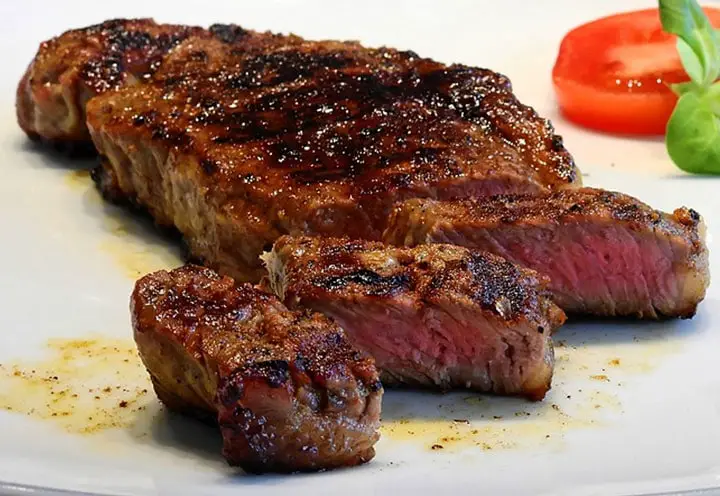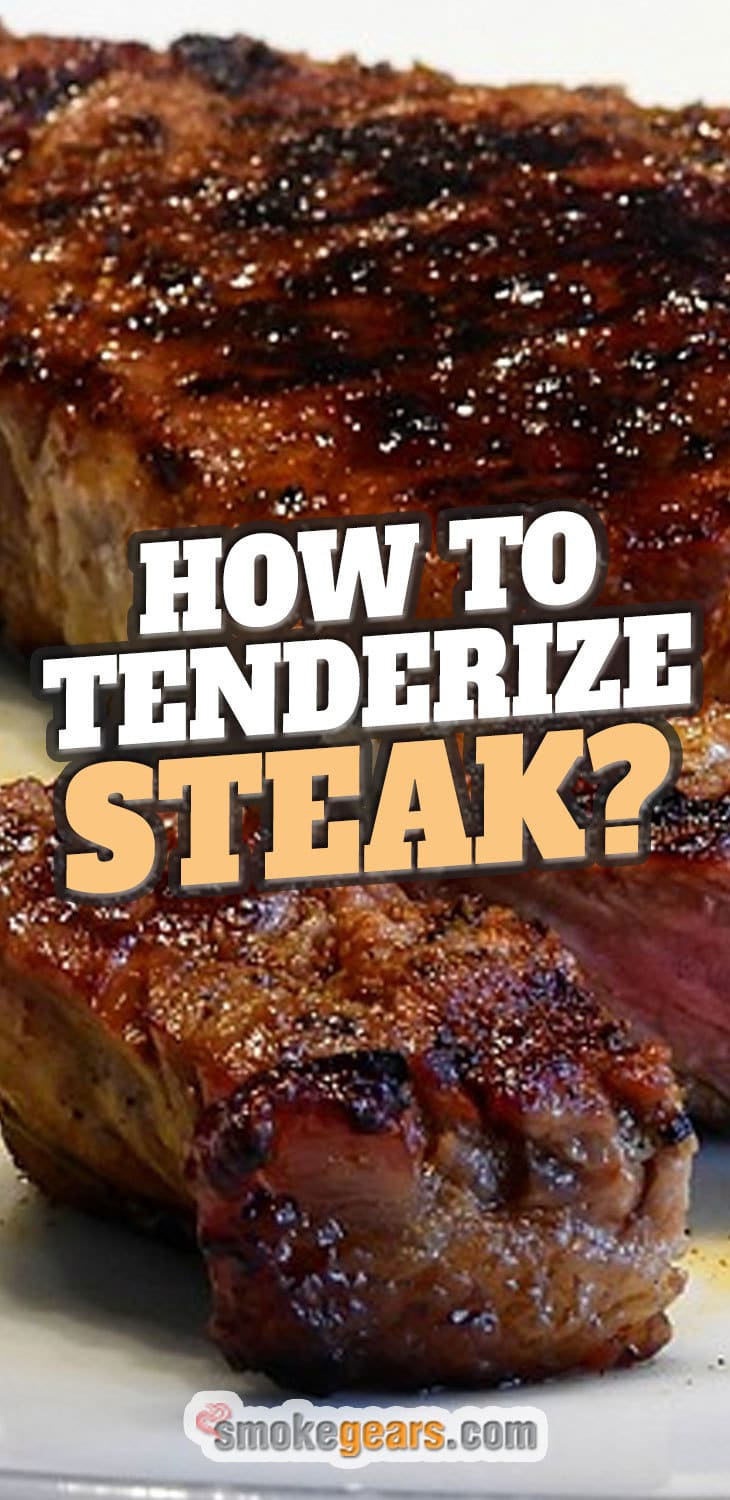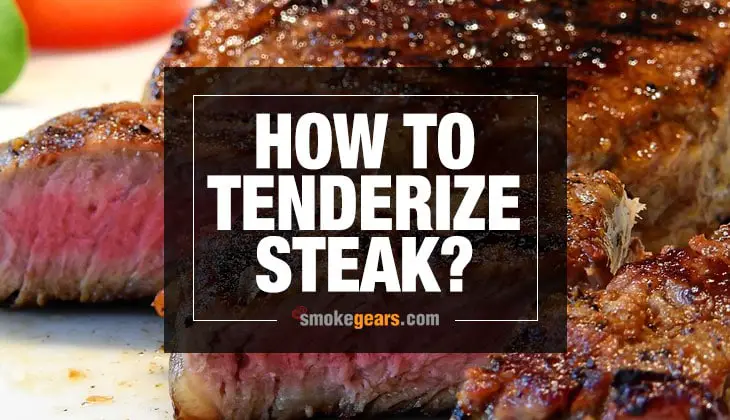How to Tenderize Steak? 6 Easy Tips and Techniques
It is quite easy to get creative while cooking a prime cut steak, such as sirloin or a rib eye. You have the freedom to experiment with flavors, as well as the style in which you are cooking.
But things get a little tricky when you are cooking with cheap cuts such as flanks or chucks. The very first thing that would bother you the most would be the firmness of the meat and not being able to get the rich flavor of the sauce through it.
So, the only solution to this would be to turn a tough steak into a lean one. In this article, we have mentioned several ways of how to tenderize steak according to your liking.
More...
What Is Tenderizing?
Meat tenderness is a method or a technique by which you can determine how chewable the meat is. Proteins with soft texture are more desirable, easy to cook, and are more palatable than the grainier ones.
There are many reasons for the toughness of the meat, such as the amount of connective tissue, fat, and collagen, and how tightly or loosely they are wrapped up together.
The process of rendering down the level of toughness and the method employed to do it is called tenderization or tenderizing.
Why Should I Tenderize My Steak?
Meat, whether red or white, consists of connective tissues that form muscle fibers and the protein myoglobin, which is responsible for the redness of the meat. While in red meat, the muscle fibers are narrower and tightly packed, in white meat, the muscles are more loosely placed.
Based on what section of the animal's body, the cuts come from, the toughness or graininess of the meat differs.
Cuts such as sirloin, loin, and rib are tender and are usually very expensive. So, if you are working on a budget, then buying such expensive proteins can put a dent on your wallet.
Therefore, the only feasible choice would be to get cuts that are more economical such as shank, chuck, and flank. These steaks are tough yet are very flavorful. However, cooking with tough meat can be troublesome. If they are not tenderized or rendered down, then they become rubbery and tough to eat.

How to Tenderize Steak?
The more tender the piece of steak gets, the more flavorful and juicier it becomes. And the type of cut that has fat marbled in between the muscles is much easier to render down, whereas, in budget-saving steaks, there is an extra layer of fat around the protein.
There are many different ways by which meat can be tenderized. You can use physical force such as pounding or piercing, or chemical agents such as brining or enzymatic reactions, or by braising and marinating.
1. Wet Brining
In wet brining, the food is treated in a solution of brine. Brine is a mixture of water and sea salt, which both preserves and seasons the food. As a form of marinating, brine can be used on steaks to tenderize it. The salt in the solution can easily penetrate through the fibers of the meat and add flavor to the steak.
Depending on the way you want to flavor your meal, you can use a range of different types of salt. Some people prefer using kosher salt while others simply add table salt. The size of the grain of the salt also affects how well the brining process works.
Technique:
To ensure an effective wet brining process, you can heat the solution so that all the salt granules in the water get dissolved. Also, you can include additional flavors such as bay leaves, rosemary, cloves, and sage. Then allow the brine to cool down before you immerse your steak into it.
2. Marinating
Marinating is a simple way of flavoring your meal. In terms of technique, it is very similar to that of wet brining. However, it does not always tenderize the steak. If you wish to use the marinating method for tenderizing, then the solution has to be acidic.
Technique:
In order to breakdown the bonds of the connective tissue in the meat, there are three ways that you can use – acidic solution, setting a neutral pH, and adding natural enzymes.
For the acidic solution, you can use vinegar, yogurt, or lemon. If you are looking to have a rustic flavor, you can even add wine to the meat. Some prefer adding natural enzymes such as papaya, kiwi, or pineapple juices or puree.
When you are using natural enzymes, it is best to use fresh juice rather than canned ones.
A tip to bear in mind, the raw meat should not be left outside for long hours. For, keeping it out for too long results in bacterial growth. So, the steak should be refrigerated soon after you marinate it.
3. Braising
This particular type of tenderizing involves moist-heat, and it is a heat-based cooking method. It is a very time-consuming way that is mostly used for cheap cuts of steak. The long cooking process slowly breaks down the protein and makes it leaner.
Technique:
The meat should be caramelized first on high flame; you can add a coating of seasoning on top before you put it on top of the stove. After the surface of the steak is seared to brown, then it is cooked on low heat.
This process breaks down the tough collagen in the protein into gelatin, which can act as a thickening agent while cooking.
For slow cooking, you can be adventurous with the way you braise your meat. You can either cook it by slow cooking in a crock pot or a pressure cooker. The closed lid prevents the meat from drying out.
You can also add purees or a liquid base such as tomato puree, wine, or balsamic vinegar. Vegetables such as mushrooms or onions could also be put into the mix. With braising, you don't need multiple pots and pans to cook up a meal; it can all be done in a single container.
4. Meat Tenderizing Powder
For those of you who are always running short of time, especially when it comes to cooking, this is one of the quickest and easiest ways to tenderize the steak.
The tenderizing powder mostly contains salt along with cornstarch, but there are also others that offer a variety of a combination of fruit enzymes such as papain from papaya or bromelain from pineapple.
A little something to bear in mind when you are using the powder, you shouldn't let the meat sit in with the powder for too long. If the meat is tough and springy, in that case, half an hour is more than enough for the meat to be chewy and succulent.
But if you leave the steak for longer than that, then you might end up with a mushy steak.
Technique:
First, you need to moisten the steak before you add in the powder. Then, make fine cuts on the steak so that the powder can seep into the meat. This simple step helps in accelerating the reaction of weakening the protein bonds.
Later, you can base the meat evenly with a layer of the tenderizing powder. If you want your steak to be more flavorful, then you can add spices. Also, add a little marinade so that your steak doesn't dry out.
5. Pounding
This method is quick and effective when it comes to tenderizing meat. For this process, you need nothing but a simple meat hammer or a mallet to get the job done.
There are two types of mallets- the wooden mallet and the metal mallet. The wooden one can be used for lean meat such as poultry, whereas the metallic one can be used for pounding red meat.
A typical mallet has two sides. One of the sides is flat, and the other one is textured with tiny edges. So, you choose the sides according to how much you want to tenderize the meat.
Also, in some of the specialized cookware stores, you can find tools with sharp ends that stabs through the meat so that the flavors can quickly get into it without breaking any of the protein fibers.
Or, if you don't have a mallet, then you can simply use an iron skillet, a rolling pin, or anything heavy.
Technique:
First, you need to wrap the steak in a cling film, or you can put it in a zip lock bag. Keep the steak on a sturdy surface that does not break easily. And then, with a mallet, you can lightly hammer the steak starting from one end all the way to the other.
When you are working with dense meat, it is apparent that you will be applying a lot of pressure on the meat to flatten it. However, you should be careful not to turn it into a mush.
Remember, the key is applying necessary force, do not exert too much abruptly.
6. Slicing
How you cut through the meat also plays a role in the texture of the meat and how chewy it can be. When you are slicing the steak along the grain, you will notice that the fibers of the meat run too long across the slice.
But if you are cutting it across the grain, then you are shortening the connective tissues, thus making it more tender and easier to chew.
Another way is through scoring. During this, your knife skills come in handy. For this, you cut the steak into thin shallow slices along the surface. And to keep the steak from drying out, you can marinate it to seal the moisture in.
Related Posts:
Propane vs Electric | T-Bone vs Porterhouse | Dyna Glo vs NexGrill | Prime Rib vs Ribeye
Our Preferred Way for Tenderizing Steak
There are many ways that you can use to save both time and energy when it comes to tenderizing a steak. However, if you are the kind of person that prefers flavor over shortcuts, then braising is the best option.
In braising, the sky is the limit! You can enrich your meal by incorporating a wide variety of flavors and ingredients into it as much as you want.
A Step-by-Step Guide to Braising
To make it easier for you, we have described the entire process of braising into a few necessary steps.

Wrapping It Up:
No one likes to have a rough and excessively chewy steak for a meal. And most of the time, it is impossible to get a quality cut steak on a regular basis for yourself or when you have friends and family over.
Therefore, knowing the process of tenderizing the steak can be useful. Not only will it bring you lauds and applause, but it will also satisfy the hungry guests.
We hope that the tips and tricks mentioned on how to tenderize steak in this article will be helpful. More so, have a great time in whipping up a great gourmet.


